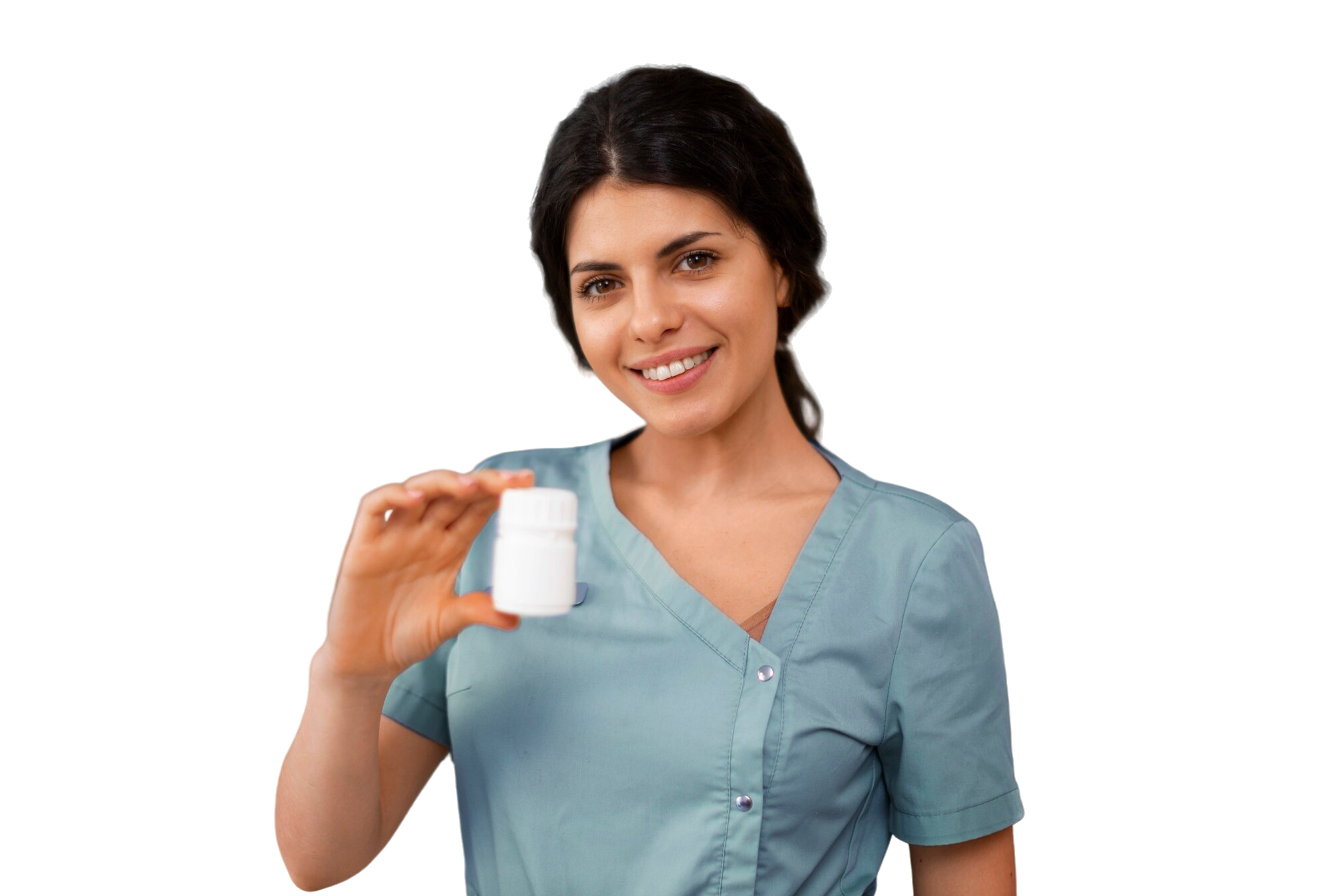When it comes to hormones, particularly those that regulate many functions in the body, estrogen plays a significant role. However, estrogen isn’t just a single hormone; it’s a group of hormones that include estradiol and estriol. Understanding the difference between these two can help you make informed decisions regarding health and hormonal treatments.

Estradiol is one of the most potent forms of estrogen produced by the ovaries. It plays a crucial role in regulating the menstrual cycle and is essential for reproductive health. Estradiol is the primary estrogen in women of reproductive age and affects various systems in the body, including the cardiovascular system and bone density.
Estradiol’s Role in the Body
Estradiol is vital for the development of female secondary sexual characteristics. It regulates the menstrual cycle and prepares the uterine lining for implantation. Additionally, it influences mood and cognitive functions, contributing to overall mental health. Estradiol also affects skin health, enhancing elasticity and reducing aging signs.
Estradiol Uses
Estradiol is commonly used in hormone replacement therapy (HRT) for menopausal symptoms such as hot flashes, night sweats, and vaginal dryness. It is also prescribed for women with low estrogen levels due to various medical conditions. Furthermore, estradiol is sometimes used in transgender hormone therapy to induce female secondary sexual characteristics.
Estradiol Benefits
The benefits of estradiol are vast. It helps maintain healthy bones, supports cardiovascular health, and contributes to cognitive function. Estradiol also plays a role in mood regulation and maintaining skin elasticity. Additionally, it can improve lipid profiles, reducing the risk of cardiovascular diseases.
Estradiol in Reproductive Health
Beyond menopause, estradiol is crucial in fertility treatments. It prepares the endometrium for embryo implantation, playing a significant role in assisted reproductive technologies. Its regulation is essential for ovulation, and imbalances can lead to infertility, emphasizing its importance in reproductive endocrinology.
What is Estriol?

Estriol, on the other hand, is a weaker form of estrogen. It is primarily produced during pregnancy by the placenta and is present in smaller amounts compared to estradiol. Despite its lower potency, estriol is important for fetal development and maintaining a healthy pregnancy.
Estriol’s Production and Function
During pregnancy, estriol levels rise significantly, as it is produced by the placenta. It plays a crucial role in fetal development, ensuring the proper growth of organs and tissues. Moreover, estriol contributes to the maternal immune tolerance of the fetus, helping prevent the mother’s body from rejecting the pregnancy.
Estriol Effects
Estriol is often used in topical creams and gels to treat vaginal dryness and urinary incontinence. Its gentle nature makes it a suitable option for women who need localized estrogen therapy but are sensitive to stronger estrogens. Estriol’s lower potency reduces the risk of systemic side effects, making it a safer choice for some women.
Estriol in Pregnancy Monitoring
Estriol levels are a key marker in prenatal screenings. Low levels can indicate potential complications such as Down syndrome or other chromosomal abnormalities. Monitoring estriol helps healthcare providers assess fetal well-being and address any issues promptly, ensuring a healthier pregnancy outcome.
Estriol’s Role in Menopause
For menopausal women, estriol provides a milder alternative for hormone therapy. It effectively alleviates symptoms like hot flashes and night sweats without the higher risks associated with more potent estrogens. Its localized action makes it suitable for those concerned about breast cancer risks or other estrogen-sensitive conditions.
Hormonal Differences Between Estradiol and Estriol
The primary difference between estradiol and estriol lies in their potency and function. Estradiol is the most potent form of estrogen and is vital for reproductive health, while estriol is less potent and primarily significant during pregnancy.
Estrogen Types and Levels
Estrogen levels fluctuate throughout a woman’s life, with estradiol levels peaking during reproductive years and declining during menopause. Estriol levels, however, increase significantly during pregnancy and are used as an indicator of fetal well-being. Understanding these fluctuations is crucial for diagnosing and treating hormonal imbalances effectively.
Potency and Biological Activity
Estradiol’s potency makes it highly effective in regulating a wide range of bodily functions. Its influence extends beyond reproductive health, impacting bone density, cardiovascular health, and even mental well-being. In contrast, estriol’s lower potency limits its effects, but this can be advantageous in reducing side effects during therapy.
Differences in Metabolism
Estradiol and estriol are metabolized differently in the body. Estradiol is rapidly metabolized to estrone, another form of estrogen, while estriol is primarily excreted unchanged. This difference affects their duration of action and efficacy in treatments, guiding healthcare providers in selecting the appropriate estrogen for individual needs.
Importance in Medical Treatments
The choice between estradiol and estriol in treatments depends on their specific hormonal effects. Estradiol’s strength makes it suitable for addressing severe menopausal symptoms and osteoporosis prevention. Estriol’s gentler action is preferred for localized treatments, offering symptom relief with a lower risk of systemic complications.
Applications of Estradiol and Estriol

by Europeana (https://unsplash.com/@europeana)
Both estradiol and estriol have medical applications, but their uses differ due to their varying potencies.
Estradiol Applications
Estradiol is frequently used in hormone replacement therapies and is available in various forms, including pills, patches, and creams. It’s effective in treating menopausal symptoms and preventing osteoporosis. Its systemic benefits extend to cardiovascular protection and mood stabilization, enhancing quality of life for many women.
Estriol Applications
Estriol is commonly used in topical applications. It’s often found in creams and gels designed to relieve menopausal symptoms like vaginal dryness. Its localized effect minimizes systemic absorption, making it a safer choice for women who prefer or require a milder estrogen. Its applications also include treatments for urinary symptoms, improving comfort and quality of life.
Combination Therapies
In some cases, estradiol and estriol are used in combination therapies. This approach can balance the potent systemic effects of estradiol with the localized benefits of estriol. Such combinations are tailored to individual needs, offering personalized treatment plans that optimize both efficacy and safety.
Innovations in Delivery Methods
Advancements in pharmaceutical technology have led to new delivery methods for estradiol and estriol. Transdermal patches, vaginal rings, and slow-release formulations enhance convenience and compliance. These innovations are designed to maintain stable hormone levels, reduce side effects, and improve overall treatment outcomes.
Difference Between Estriol and Estradiol Cream
When it comes to topical applications, estradiol and estriol creams serve different purposes. Estradiol creams are more potent and used when a stronger estrogen effect is needed. Estriol creams, being milder, are ideal for localized treatment without significant systemic effects.
Understanding Cream Usage
The choice between estradiol and estriol creams depends on the individual’s hormonal needs and medical history. While estradiol creams are effective for more severe symptoms, estriol creams offer a gentler alternative with fewer side effects. Consulting with a healthcare provider can help determine the most appropriate option for each patient.
Advantages of Topical Treatments
Topical treatments offer targeted relief with minimal systemic exposure. This localized approach is beneficial for women concerned about the risks associated with systemic hormone therapy. Topical creams also allow for adjustable dosing, providing flexibility in treatment plans and catering to individual symptom severity.
Safety Considerations
Safety is paramount when choosing between estradiol and estriol creams. Estriol’s lower systemic absorption reduces the risk of adverse effects, making it suitable for long-term use. In contrast, estradiol creams require careful monitoring to prevent complications, particularly in women with a history of estrogen-sensitive conditions.
Patient Preferences and Lifestyle
Patient preferences and lifestyle factors often influence the choice between estradiol and estriol creams. Some women prioritize convenience, opting for formulations that fit seamlessly into their daily routines. Others may focus on minimizing side effects, choosing estriol for its milder profile, and aligning treatment with their personal health goals.
Health Implications and Considerations
Choosing between estradiol and estriol for hormone therapy should be based on an individual’s specific health needs and under medical supervision. Both hormones have their advantages and potential risks, and it’s crucial to understand these before starting any treatment.
Consulting Healthcare Providers
It’s essential to consult with healthcare providers when considering hormone therapy. They can help determine which hormone, in what form, is best suited to your needs, ensuring both safety and effectiveness. Regular follow-ups and monitoring are critical to adjust treatments as needed and manage any emerging side effects.
Risk Assessment and Management
Understanding the risks associated with hormone therapy is vital for informed decision-making. Healthcare providers assess factors such as age, medical history, and personal preferences to tailor treatments. They also educate patients on signs of complications, empowering them to seek timely intervention when necessary.
Long-term Health Monitoring
Long-term health monitoring is crucial for women undergoing hormone therapy. Regular assessments of bone density, cardiovascular health, and breast health are recommended. These evaluations help detect any adverse effects early, allowing for prompt adjustments in therapy and minimizing long-term risks.
Lifestyle and Hormone Therapy
Lifestyle factors play a significant role in the success of hormone therapy. A balanced diet, regular exercise, and stress management can enhance treatment outcomes. Healthcare providers often offer guidance on lifestyle modifications that complement hormonal treatments, promoting overall health and well-being.
Conclusion: Estradiol vs. Estriol
In summary, understanding the key differences between estradiol and estriol can guide better decision-making regarding hormonal health. Estradiol, with its potent effects, is vital for reproductive health and effective in treating menopausal symptoms. Estriol, while less potent, serves crucial roles during pregnancy and in localized estrogen therapy.
Navigating hormonal treatments can be complex, but with the right knowledge and professional guidance, you can make informed decisions that best support your health and well-being. By understanding these hormonal differences, you can choose the right path for treatment and enjoy the benefits that each hormone offers in its unique way.
Informed Decision-Making
Informed decision-making involves understanding the science behind estradiol and estriol. Empowered with knowledge, patients can engage in meaningful discussions with healthcare providers. This collaboration ensures that treatment plans align with individual health goals and preferences, optimizing both efficacy and safety.
The Future of Hormone Therapy
The future of hormone therapy lies in personalized medicine. Advances in genetic testing and biomarker research promise more tailored treatments. As science progresses, the ability to customize hormone therapies to individual needs will enhance outcomes and minimize risks, ushering in a new era of healthcare.
Embracing Hormonal Health
Embracing hormonal health is about more than just symptom management. It’s about achieving a balance that supports vitality and quality of life. With comprehensive understanding and support, individuals can navigate the complexities of hormone therapy and enjoy the benefits of optimized hormonal health.
Final Thoughts
In conclusion, the key to successful hormone therapy lies in understanding the unique roles and applications of estradiol and estriol. With informed choices and professional guidance, individuals can optimize their hormonal health and enhance their overall well-being. By embracing the nuances of these hormones, patients can make empowered decisions that promote a healthier, more balanced life.


